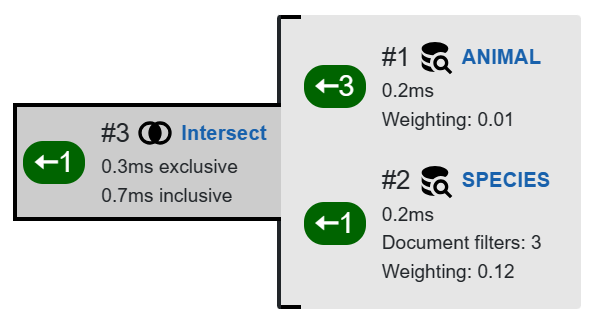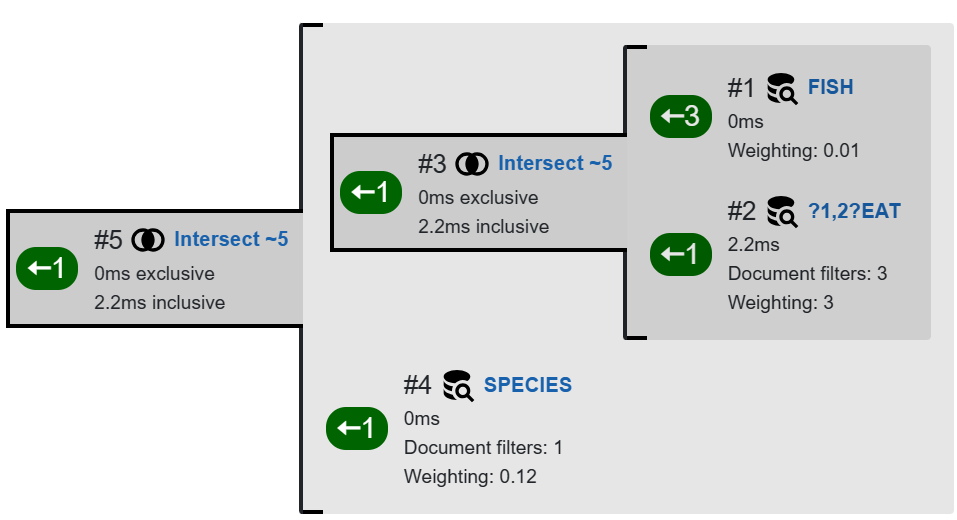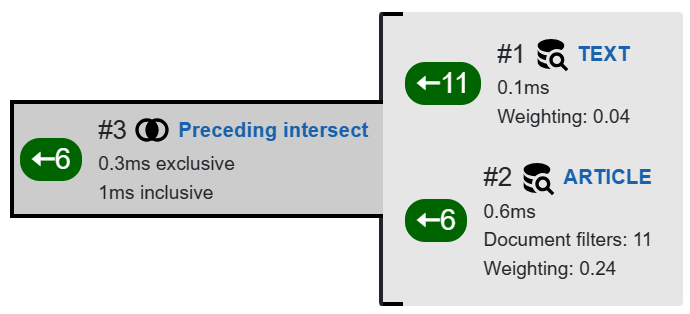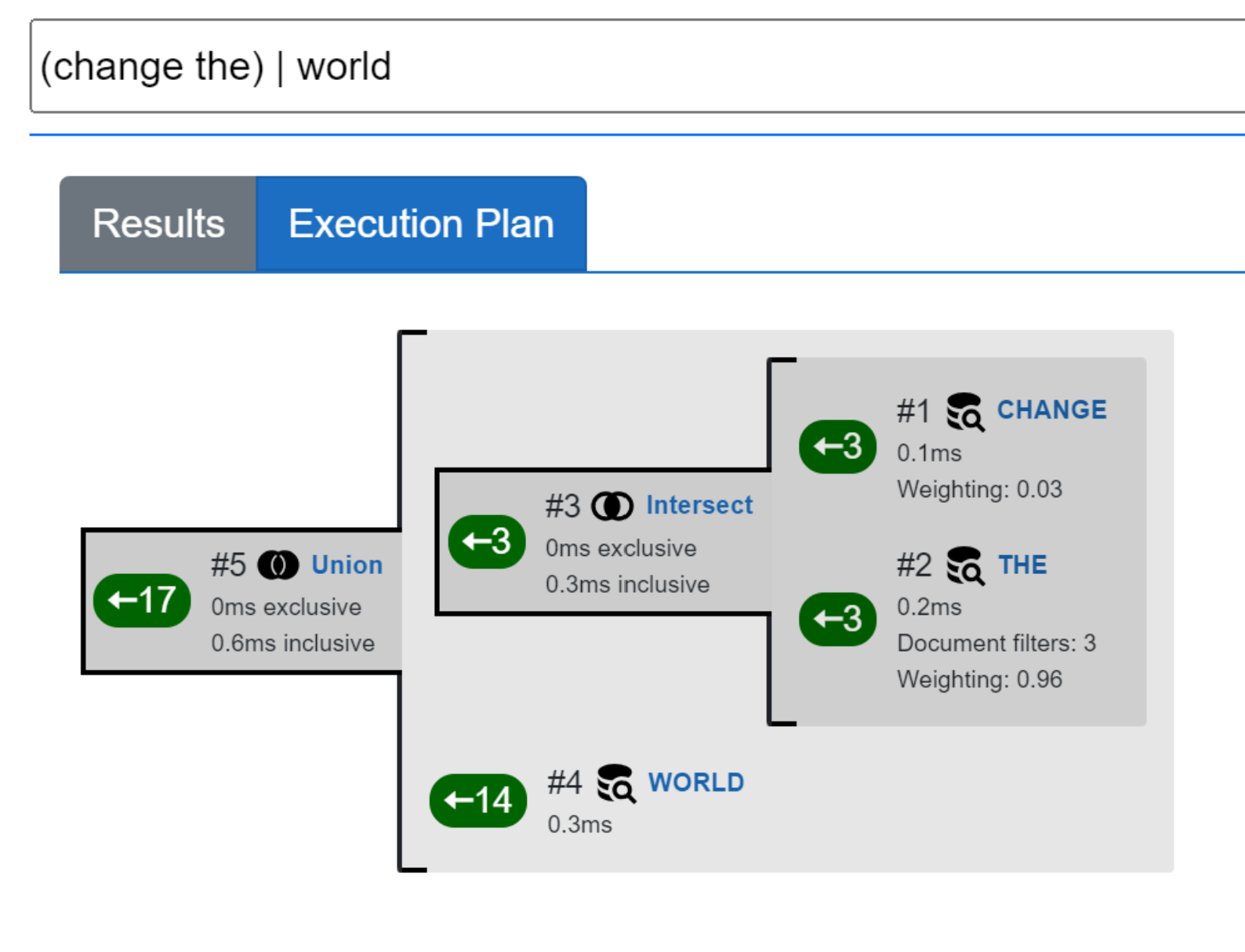Understanding Query Execution Plans
Overview
The QueryExecutionPlan class represents the execution strategy for a given query. It includes information about the sequence of operations, their timings, and the number of documents affected at each stage of the query.
Query execution plan nodes
Node properties
The execution plan is structured as a tree of QueryExecutionPlanNode instances, each representing a part of the query execution process. Each QueryExecutionPlanNode includes details about its part of the query execution:
- ExecutionOrder: The sequence number of the node within the execution plan.
- Kind: The type of operation performed at the node - see the examples below.
- ResultingDocumentCount: The number of documents returned by this part of the query.
- Weighting: The weighting score calculated for this part of the query. If the execution of the query didn’t necessitate the score to be calculated, this will be null.
- DocumentFiltersApplied: The number of document filters applied at this stage. This will be non-null if the results from a preceding evaluation can be used to pre-filter the results at this node, mitigating the need for scoring matches that will just be discarded in a subsequent node.
- FieldFiltersApplied: The number of field filters applied.
- Text: A textual representation of the node, providing insight into the specific operation or query part.
- InclusiveTiming: The total time taken by this node and its children.
- ExclusiveTiming: The time taken by this node, excluding its children.
- Children: Child nodes of this node, representing subsequent operations in the query execution process.
Node kinds
QueryPart
Represents a textual query that was evaluated against the index. The text of the node will contain the query.

Union
Typically introduced by an OR (|) operator. Results from the child nodes are combined into one set. Where documents are present in both nodes, their field matches are combined.

Intersect
Typically introduced by an AND (&) operator. Only document results that are present in both child nodes are returned. Field matches for the intersected documents are combined.

Note the 3 document filters applied to the second search (SPECIES) - these are the 3 documents that were returned from the first search (ANIMAL). Without those document filters applied, searching for SPECIES would have returned many more documents.
PositionalIntersect
Introduced by the near (), preceding near (>) and adjacent words ("") operators. Like Intersect, but the locations of the matched tokens are taken into
consideration and combined into a composite matched location which allows for the results of multiple positional matches to be combined in sequence.
Intersected documents that have no appropriate tokens matching are filtered out.

PrecedingIntersect
Introduced by the preceding (>) operator. Intersects matched documents but only where the matched tokens in the left node precede those in the right node. Intersected documents that have no appropriate tokens matching are filtered out.

ResultsOnly
A placeholder node representing the final query results without a specific operation. This will only ever appear if the index
was queried without the QueryExecutionOptions.IncludeExecutionPlan option specified.
Usage Example
To analyze a query execution plan, start with the Root node and explore its properties and children. This allows you to trace the execution path, understand the impact of each operation, and identify potential areas for optimization.
The Blazor sample provides a way to visualize the query execution plan:
